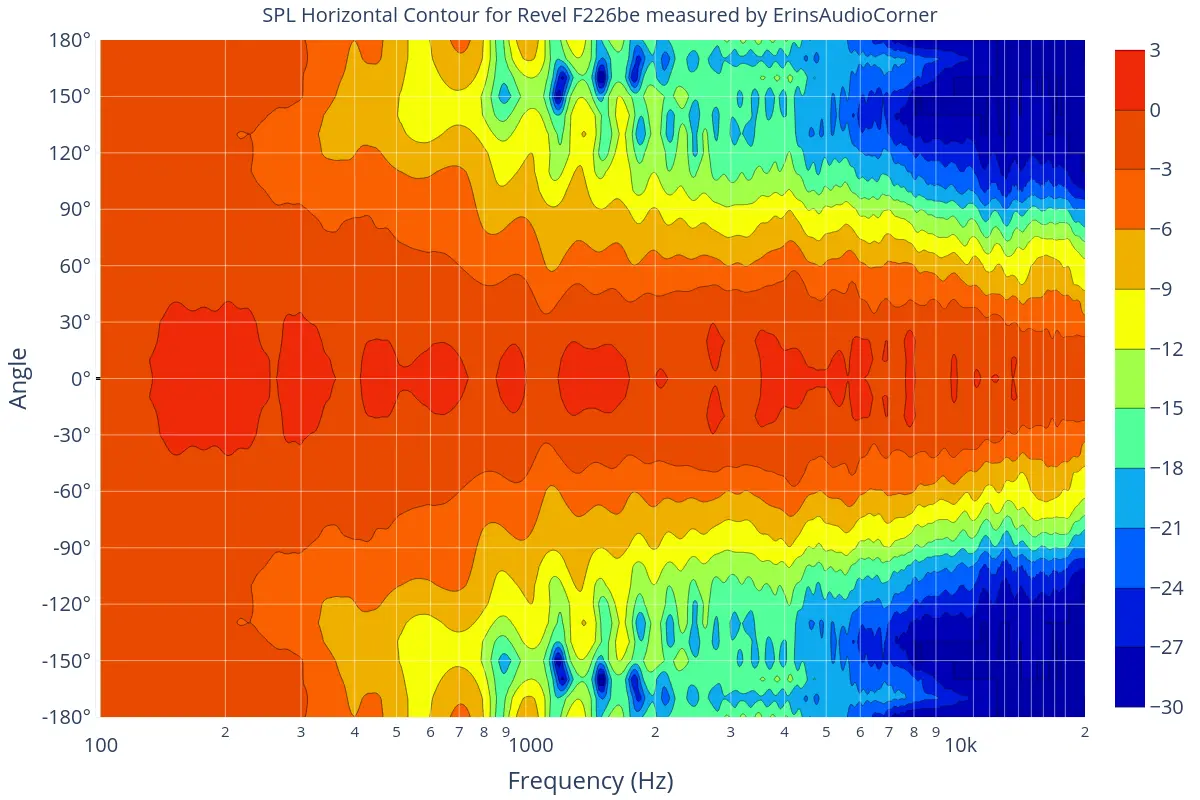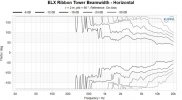Aaron,Well Dave I didn't say the lift was in the PIR because that is not how our audible system processes sounds...it's nice extra info is about all. The direct sound is the most important sound followed by the early reflections which have been shown to be responsible for spaciousness and is what I use to gauge wide dispersion. I'm sure you're going to talk about the contour plot but the scale is so different it's hard to compare them and late arrivals haven't been shown to matter anyway.
So checking the Spin you can see a clear boost from 600-1200Hz in the listening window, you can try to draw an intellectually dishonest line again but I think most people can clearly see it. Someone who does own them literally just made the comment that:
"If I were to say that any aspect of the ELX's response is even slightly shelved up to my hearing, it would be the midrange. There's a low amplitude but broad rise here that is audible when compared to something flatter like the 226Be." So don't shoot the messenger dude, they're just speakers and I said they are very neutral overall, most passive speakers have at least 1 flaw that would benefit from EQ so it's not really a knock on them.
The ERDI also is pretty clear that the F226 is smoother except for that dip at 2500Hz and everywhere else is only about 3db weaker than the direct sound where the Sierra ELX has an abrupt shift around 600Hz and stays around 3-4 db weaker than the listening window so I would expect the early reflections to be slightly weaker.
The research on vertical reflections is very limited but the few studies I've seen does show a spatial advantage, just not quite as strong as horizontal, I summarized and named the studies in this thread: https://www.audiosciencereview.com/forum/index.php?threads/research-on-reflections.27532/
View attachment 257395
I do hope you realize you are mistakenly looking at, commenting on, and pulling measurements of an entirely different speaker. This is and has been a discussion about our ELX Ribbon Towers. You are looking at and pulling measurements of our original Towers with the updated V2 crossover, still extremely good and remarkably so for only $3600/pair, but not quite to the level of performance of our ELX towers.
And frankly, I don't appreciate your comment " you can try to draw an intellectually dishonest line again but I think most people can clearly see it" Nothing at all dishonest about that trend line, that is how they are drawn...
Last edited:


